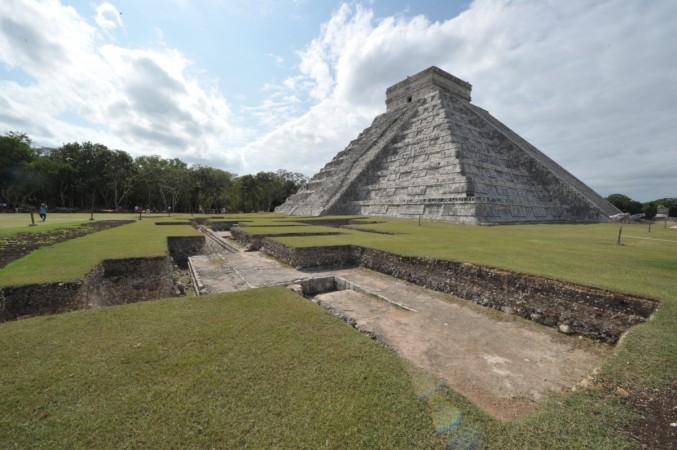
The ancient Mayan pyramid in Mexico's Chichen Itza continues to fascinate researchers. Researchers believe that the recent discovery of the secret passageway under the 1,000-year-old Temple of Kukulkan could reveal the 'sacred geography' of the site and give out some information about the ancient beliefs of Mayans.
Spanish explorers discovered Kukulcan pyramid in the 15th century AD and since then several researchers have surveyed the underground world of Chichen Itza. Now a team of the Great Mayan Aquifer Project led by the archaeologist Guillermo de Anda made a striking discovery using advanced imaging techniques.
According to the researchers, the secret passageway leads to an underground water-filled cave called as cenote or natural sinkhole. There are stories that Mayans used these water-filled caves for human sacrifices.
The passageway was discovered through ossuary, which is a smaller burial chamber. However, the ossuary is currently blocked off. The team of researchers believes that Mayans blocked the passage deliberately.

"Through the Ossuary, we can enter the cave beneath the structure and there we found a blocked passageway, probably closed off by the ancient Mayans themselves. We will enter again and this time we will try to open it to see if the passageway leads us to the entrance of the cenote beneath the pyramid," Dr de Anda told El Universal.
"First we want to prove it exists because no one has seen it, we only have the images; then we'd have to explore it," de Anda said.
It is said that Mayans might have constructed the temple, a never-seen-before area, around 900 to 1,100 years ago as part of their religious beliefs. Kukulkan is the name of Mayan snake deity or Feathered Serpent, who grew up inside a cave before emerging out and causing an earthquake.

















